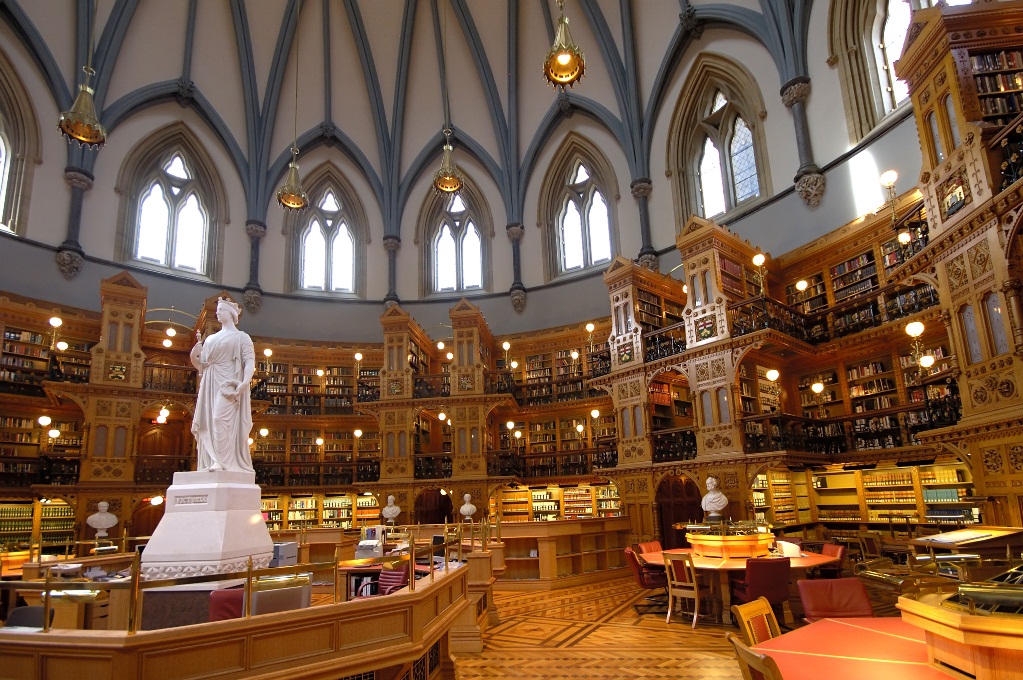Wednesday 21 January at 18.00
Altiero Spinelli Building – EPRS Library Reading Room (ASP 05D)
‘Federalism has all along been a product of reason in politics … it is an attempt to find a rational compromise between the divergent interest-groups which history has thrown together; but it is a compromise based on the will of the people.’ Pierre Elliott Trudeau (1919-2000), former Prime Minister of Canada,
Written by Jacques Lecarte

Sonia L’Heureux is the Librarian of the Parliament of Canada. In this capacity she oversees the Parliamentary Research Service, the Budget Office and the Information and Document Resource Service. She reports directly to the speakers of the two chambers of Parliament. In the framework of EPRS’s cooperation with the parliamentary research services of other continental democracies, she is paying a two-day working visit to the European Parliament. On Wednesday 21 January, she will address Members and staff on the issue of ‘Federalism in Canada’. Mr Bernd Kölmel MEP, chair of the Delegation for relations with Canada, will open the event.
Canada is the world’s second largest country but its population is only 34.7 million. Nearly 90% of Canadians live in metropolitan areas within 200km of the border with the United States. In the 2011 National Household Survey, more than 200 ethnic origins and 200 languages were reported; English was spoken by 75% of the population, French by 23.2% while 1. 8% of the population spoke neither English or French.
The fundamentals of Canadian federalism were first set out at the time of Confederation in the 1867 British North America Act, which was renamed the Constitution Act in 1982. This Act set out the jurisdictional powers of both the federal and provincial levels of government. The country also has two further levels of government, territorial and local, which are not constitutionally recognised.
 The first constitutionally recognised level of government is the federal or national government. This level is responsible for enacting and implementing laws for the whole country.The federal government consists of the Monarch (through her representative in Canada, the Governor General) and the National Parliament, located in Ottawa, the nation’s capital, with its two legislative chambers, the House of Commons and the Senate. The head of state is the Monarch; however, her role is primarily ceremonial. The bulk of federal power lies with the federal head of government and his executive council; the Prime Minister and his Cabinet, as well as the elected legislative chamber, the House of Commons. The second federal chamber, the Senate, exercises considerably less power. Another key federal institution is the federal judiciary; this includes the Supreme Court of Canada, which is appointed by the federal government and is the highest court in the country. Other important federal-level courts include the Federal Court of Appeal, the Federal Court and the Tax Court of Canada. Another important federal institution is the national public service which is responsible for assisting the federal government.
The first constitutionally recognised level of government is the federal or national government. This level is responsible for enacting and implementing laws for the whole country.The federal government consists of the Monarch (through her representative in Canada, the Governor General) and the National Parliament, located in Ottawa, the nation’s capital, with its two legislative chambers, the House of Commons and the Senate. The head of state is the Monarch; however, her role is primarily ceremonial. The bulk of federal power lies with the federal head of government and his executive council; the Prime Minister and his Cabinet, as well as the elected legislative chamber, the House of Commons. The second federal chamber, the Senate, exercises considerably less power. Another key federal institution is the federal judiciary; this includes the Supreme Court of Canada, which is appointed by the federal government and is the highest court in the country. Other important federal-level courts include the Federal Court of Appeal, the Federal Court and the Tax Court of Canada. Another important federal institution is the national public service which is responsible for assisting the federal government.
Provincial governments form the second constitutionally recognised level of government in Canada. There are 10 provinces in Canada, each with their own provincial government. Each province has a parliamentary government with three branches: executive, legislative and judicial. In addition, each province has its own provincial public service, which includes government departments and agencies that are responsible for assisting their respective governments.
Canada also has three territories, each with their own government: the Yukon, the Northwest Territories, and Nunavut. Like their provincial counterparts, these are regional governments with three branches – executive, legislative and judicial. Unlike the provinces, territories are not constitutionally recognised entities. Instead, the territories fall under the legislative jurisdiction of the federal government.
The final level of government in Canada is local government, which includes municipal, county/parish, and semi-regional councils, boards, and agencies. Like the territories, local governments are not constitutionally recognised entities. Local governments fall under the jurisdiction of the provinces and territories, which are responsible for creating local governments and setting out their basic frameworks.
Canada and the EU
Canada is one of the European Union’s oldest and closest partners. What started out in the 1950s as a purely economic relationship has evolved over the years to become a close strategic partnership. EU-Canada relations are being upgraded through a Comprehensive Economic and Trade Agreement (CETA) and a Strategic Partnership Agreement (SPA).The most recent EU-Canada Summit was held in Ottawa on 26 September 2014.
In its resolution adopted on 10 December 2013, the EP insisted on the fact that these agreements should contain a solid commitment to inter-parliamentary cooperation that recognises the important role of both the European Parliament and the Canadian Parliament in EU-Canada relations.









Be the first to write a comment.